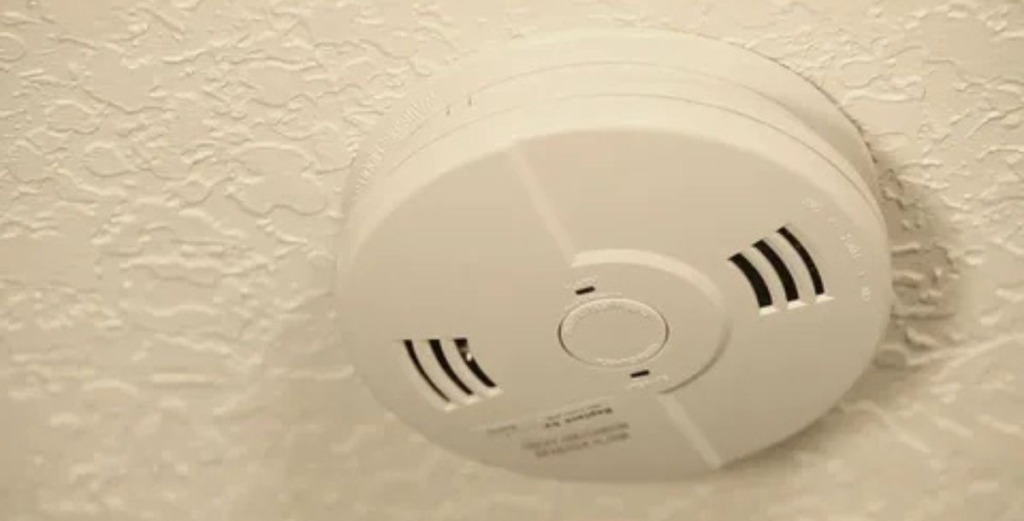
Your home should always be a place of safety. Yet invisible dangers like smoke and carbon monoxide can turn it into a life-threatening environment within minutes. Each year, thousands of people lose their lives to house fires or carbon monoxide poisoning—many of which could have been prevented with a simple smoke and carbon monoxide alarm.
A quiet home can change in seconds. Smoke spreads faster than most people can react, and carbon monoxide takes effect before it’s even noticed. The danger isn’t always visible—but it’s always closer than we think.
Why You Need a Smoke and Carbon Monoxide Alarm
Studies show that more than half of home fire fatalities occur in houses without a functioning alarm, according to the National Fire Protection Agency. This is not only a matter of technology—it’s a matter of responsibility. A smoke and carbon monoxide alarm is not merely a machine; it is a life-saving machine that is programmed to sense both the visible smoke and the invisible and odorless gas carbon monoxide. Fire smoke may travel very quickly, and carbon monoxide is a silent spreader of the smoke inside the air of gas stoves, furnaces, or car exhaust.
These hazards can easily be overlooked before it is too late, and no one notices without an alarm. For example, a gas leak from a malfunctioning heater or an unattended candle can quickly fill the home with carbon monoxide or smoke. Without a dual-sensor alarm, such incidents often go unnoticed until it’s too late. All households that burn any fuel, including a fireplace, gas burner, or generator, must have this two-purpose gadget. It keeps on checking the air making even minute leaks or fires to fire off an alert. The seconds that it offers can be life or death.
How the Alarm Works
Modern smoke and carbon monoxide alarms combine two sensing technologies in one unit. The smoke detector uses either photoelectric or ionization sensors to detect smoke particles, while the CO sensor relies on electrochemical technology to sense even trace levels of the deadly gas. Among these, the Gas Dog smoke and carbon monoxide alarm adopts an advanced dual-sensor design built to deliver consistent accuracy under various household conditions and meets UL safety certification standards to ensure reliable, tested performance. This reflects the industry’s shift toward more stable and sensitive detection systems that prioritize early warning and reliability. When danger is detected, the alarm sounds at over 85 decibels—loud enough to wake even heavy sleepers—and may flash lights or send a notification to your phone.
Once either of the dangers is detected, the alarm should produce a loud, incomparable sound and may have flashing lights. Some devices alert your smartphone even when you are not at home, which means that even when you are not at home, you will receive a notification that something has happened. Every second counts. When the alarm sounds, those seconds can mean the difference between escape and tragedy.
Maintenance and Testing
Owning an alarm is only the first step—keeping it functional is what truly protects your family, says First Alert. Imagine a family in winter relying on a gas heater; if the alarm’s battery dies unnoticed, a silent carbon monoxide leak could go undetected. Monthly testing ensures that the alert will sound when it matters most. Check the alarm every month by pressing the test button to make sure the alarm is functional. Change batteries after six months or select lithium battery models that can be long-life and last up to 10 years.
The sensors in such devices also wear out through time, and thus it is advisable to change the whole unit after 7 to 10 years. Wipe the alarm with a vacuum attachment to get dust off the alarm, which may interfere with sensitivity. Keep that in mind–it is a little thing, but your family depends on this little thing. Maintenance may seem routine, but neglecting it turns prevention into risk. Testing once a month is not a task—it’s an act of protection.
Smart Technology and Modern Advancements
The modern-day alarms have become more than just a beeping mechanism. Smart Smoke and Carbon Monoxide Alarm systems are connected to Wi-Fi and complemented by smart home hubs, and give real-time alerts to mobile devices. Others even talk to smart thermostats or surveillance cameras to turn off HVAC units automatically when carbon monoxide is sensed to avoid further transfer of hazardous gas.
These smart alarms can also check themselves, and this ensures they are always operational, and they also minimize false alarms. As a bonus of clarity, voice cries bring another dimension of clarity into the mix, which means that families can make an immediate decision, and their choices are correct because they are announced as Fire in the kitchen or Carbon monoxide detected in the living room.
Reflecting these advancements, the Gas Dog smoke and carbon monoxide alarm integrates smart connectivity and self-testing features designed to maintain constant readiness. It represents a broader movement in home safety technology—where detection devices no longer simply react to danger, but actively prevent it. In the past, alarms simply reacted to danger. Today, they anticipate it. Smart systems can detect, alert, and even prevent escalation—an evolution from response to readiness.

The Real Impact: Stories That Prove Their Worth
When alarms work, they rewrite the story. Without them, the same events end in silence. Millions of lives around the world have been saved thanks to timely warnings from smoke and carbon monoxide alarms. Families have escaped house fires in the middle of the night, and others have been rescued from carbon monoxide leaks while they slept — all because of early detection.
In 2023, a family in Ohio was awakened at 2 a.m. when their smart alarm detected rising CO levels from a malfunctioning furnace. They evacuated before the gas reached dangerous concentrations. In another case, a homeowner received a mobile notification while away at work—allowing firefighters to respond before the kitchen fire spread. These real-world examples show how crucial these devices are in preventing tragedy — often turning potential disasters into stories of survival.
Unfortunately, many homes still lack working smoke or carbon monoxide alarms — and these are the ones most at risk. Studies show that most fire- and CO-related fatalities occur in houses where detectors were missing or disabled. Installing even a single alarm on each floor can dramatically reduce the risk of death or injury. It’s a small device, but it may be the most valuable safeguard you ever add to your home.
FAQ
Can I install a Smoke and Carbon Monoxide Alarm myself?
Most of the models can be easily installed, yes. Plug-in alarms or battery-operated alarms have easy instructions on how to mount them. But in the case of wired systems, it is advisable to employ an expert electrician.
What are the symptoms of carbon monoxide poisoning?
Typical manifestations are headaches, dizziness, nausea, confusion, and tiredness. Carbon monoxide is a gas that is not visible, so the only sure means of detecting it is by using a Smoke and Carbon Monoxide Alarm to avoid severe symptoms.
Do I need an alarm even if I don’t use gas appliances?
Yes, since carbon monoxide is still able to get inside your house, either through attached garages, neighbors with generators, among other sources. At least one alarm must be installed in every home, irrespective of the method of heating.
How loud is the alarm, and can it wake heavy sleepers?
The majority of alarms will go off at 85 decibels or more, than enough to wake the majority of individuals. The interlocked alarm system is used to make sure that all the units are activated at the same time to further guarantee that all the residents of the house are awakened.
Conclusion
The smoke and carbon monoxide alarm is the first line of defense that the house has against the silent killers. Its detection capability of fire and carbon monoxide saves lives daily. Frequent tests, maintenance, and installation are necessary to be reliable.
Devices such as the Gas Dog smoke and carbon monoxide alarm embody this reliability, combining long-term precision with the simplicity of everyday use. Safety doesn’t happen by chance—it’s the result of preparation. Installing an alarm is not only about compliance; it’s about care.
Protect what matters most. Installing a reliable smoke and carbon monoxide alarm is a small step that delivers lasting peace of mind—because every second of warning can make the difference between safety and tragedy.























